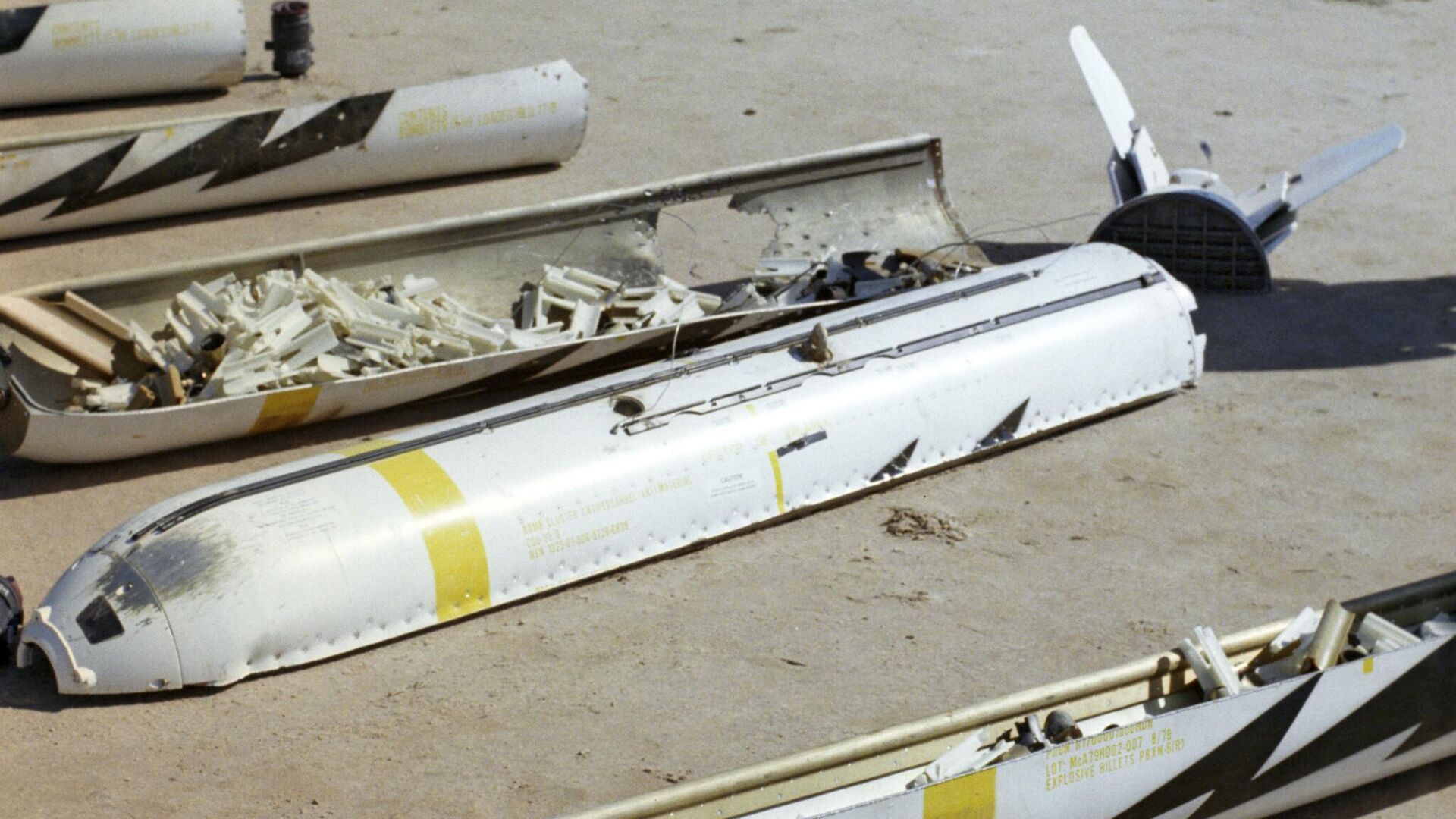Russian Troops ‘Quickly’ Adapting to Cluster Bombs as Ukraine Fails to Reach Main Defensive Lines
10:02 09.08.2023 (Updated: 10:03 09.08.2023)

© Sputnik . Mikitenko
Subscribe
The US resorted to sending deadly, high dud-rate cluster munitions to Ukraine last month after admitting that it was running out of conventional 155 mm munitions for its proxy war with Russia. Moscow, the US’s NATO allies, and even members of President Biden’s own party slammed the White House over the decision.
The Russian troops manning the defensive lines which have managed to halt Ukraine’s NATO-backed offensive dead in its tracks are adapting to the use of US-made cluster bombs by Ukrainian forces, US business media have reported, citing Ukrainian frontline commanders and troops familiar with the situation.
“The cluster bombs are good. They are effective. But the Russians are dug in deep, and they learn quickly,” one Ukrainian reconnaissance company commander told the outlet, explaining that Russia has dug 7 foot-deep trenches and spread troops out over wide areas to avoid heavy losses.
Along with the use of American cluster bombs, Ukrainian forces have reportedly shifted tactics from armored thrusts to highly costly on-foot approaches toward Russian positions through minefields which have reportedly resulted in “substantial casualties.” The shift in tactics reportedly came after Ukrainian forces lost large numbers of armored vehicles to Russian-laid minefields when the counteroffensive began in early June.
“We’re demining the fields with bodies,” one Ukrainian platoon commander of Western-trained brigades told the outlet. “It’s awful.” Another, wounded in an apparent Russian missile strike during an attempt to advance, said that of the 60 men involved in an assault on Russian positions, 45 had been killed or injured.
The cluster munitions and new tactics reportedly haven’t allowed Ukraine’s forces to reach “the most formidable Russian defenses,” consisting of a series of infantry trenches, tank traps, and other obstructions which would require heavy tanks to penetrate.
In spite of the apparent lack of progress, Ukrainian troops nevertheless praised the cluster bombs over their wide kill and injury radius. “Even if you miss a little, it still works,” one soldier was quoted as saying. “With the cluster bombs, you fire three times and the trees totally collapse,” he added, referencing the wooded areas teeming with Russian troops which can make advances difficult.
Former United States Army Europe commander Ben Hodges also praised the cluster bombs use, saying “if you’re sitting in an open trench, you’re going to pay a huge price due to these things,” and that they can also be effective against enemy artillery “as long as they can reach it.”
The Biden administration announced plans to send hundreds of thousands of cluster bombs to Ukraine in early July, with the munitions, which can be fired from howitzers, expected to assist the Ukrainian military in its flagging counteroffensive. The offensive operations have reportedly cost over 43,000 Ukrainian servicemen’s lives, and more than 4,900 pieces of military equipment, including 1830+ tanks and other armored vehicles – up to 20 percent of Ukraine’s pre-counteroffensive inventories.
The US and its allies have sent nearly $100 billion in weapons, munitions, training, intelligence and other support to Ukraine since February 2022. Facing Russian artillery and airpower superiority, Ukrainian forces have failed to reach the hoped-for breakthroughs in the Donbass, Zaporozhye and Kherson, sparking growing concerns in Kiev and among Ukraine’s Western patrons that Western publics will lose interest in continuing to fund the brutal and "unwinnable" proxy war with Russia.

